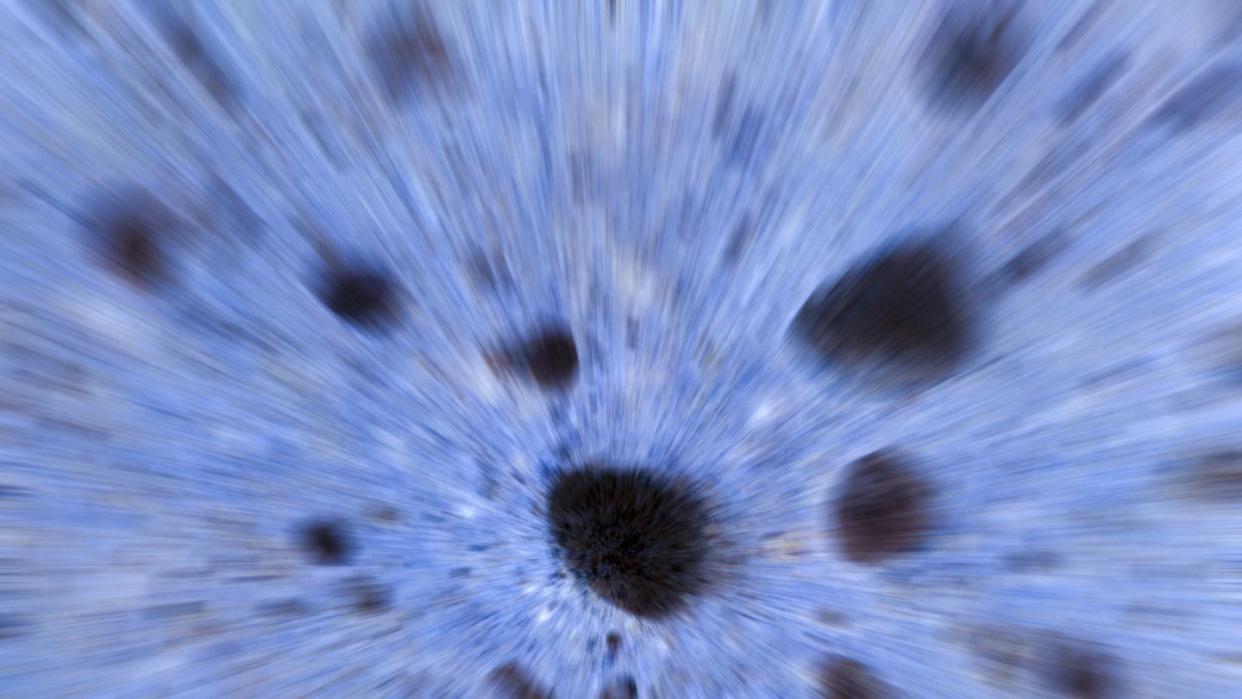Scientists Made A Pseudo-Model Black Hole in a Lab

"Hearst Magazines and Yahoo may earn commission or revenue on some items through these links."
Black holes are notoriously difficult to study, as they are both far away and so massive that not even light can escape.
So, scientists from the University of Nottingham created a “giant quantum vortex” using a helium superfluid with 500 times less viscosity than water.
These Earth-bound vortices could help experts understand black holes—or even inch closer to a Grand Unified Theory.
Observing a black hole is a bit of an oxymoron. After all, our eyes require photons to make sense of the world, and seeing as photons (aka light) can’t escape a black hole, the whole “observing” thing becomes pretty impossible pretty quickly7.
But over the decades, scientists have developed techniques to study black holes by observing their effects on surrounding matter. And now, scientists from the University of Nottingham in the U.K. have developed a novel new approach to studying these hugely important—yet observationally elusive—celestial objects.
By using superfluid helium (with a viscosity 500 times lower than water), the researchers managed to create a quantum simulator by placing the helium in a tank with a spinning propeller. Due to the extremely low-friction and vortex-like environment, this particular helium begins exhibiting “unusual quantum effects,” according to New Scientist. These effects allowed the team the team to observe black hole-like phenomena, such as “ringdown mode” and cosmic fields interacting with the gravitational vortices. Their latest work was published on the preprint server arXiv in 2023, and was last revised this past November. The paper has yet to be peer-reviewed.
“Physics repeats itself in many places. It’s a set of mathematical models that are very universal. And if the maths is the same, the physics ought to be the same,” University of Nottingham’s Silke Weinfurtner told The Guardian last year. “To me, the analogues are a gift from nature. There is a whole class of systems that possess the same physical processes.”
Understanding black holes is imperative from both an astronomical and a general physics perspective. That’s for a few reasons, but namely because black holes are hugely important in regards to the formation of the universe, and because the objects are where Albert Einstein’s well-worn General Relativity and the time-tested Quantum Field Theory appear to contradict each other.
And if there’s one thing scientists hate, it’s contradictions.
While the diameter of Sagittarius A* (that’s the supermassive black hole at the center of our Milky Way galaxy) stretches some 14.6 million miles in diameter, these human-made quantum vortices are decidedly puny—only a few millimeters across. But their diminutive size is actually much larger than previous vortices created from quantum fluids.
“While similar vortices have been made before in physical systems other than superfluid helium, their strength is typically at least a couple of orders of magnitude weaker,” University of Nottingham Patrik Švančara told New Scientist.
As New Scientist explained, it’s difficult to form these vortices. That's because they’re made up of tiny “packets” called quanta. Usually, when you get too many quanta together, they become unstable. But this particular experiment was able to combine 4,000 quanta to create a “giant quantum vortex.”
With these quantum vortices, studying black holes becomes much more feasible. It’s not necessarily a 1:1 with the real thing, but it’s much more than a jumping off point. Turns out, if you can’t go to a black hole yourself, you can just bring the black hole to you.
You Might Also Like

